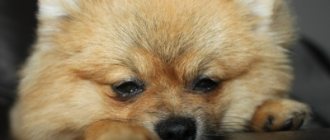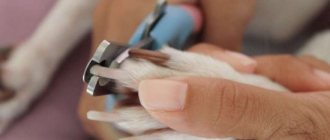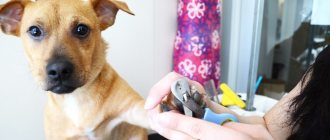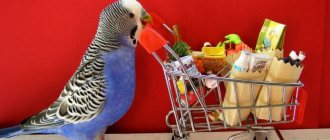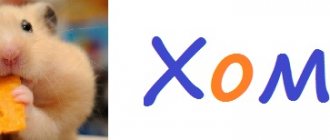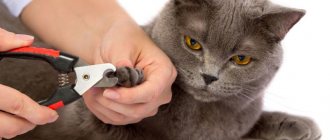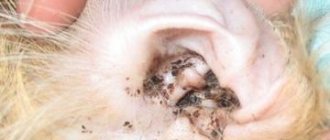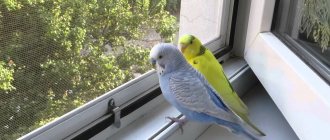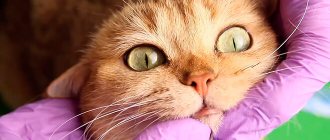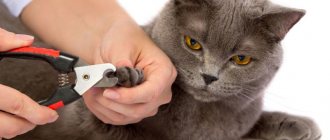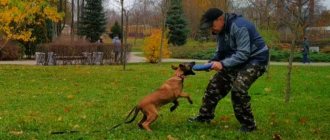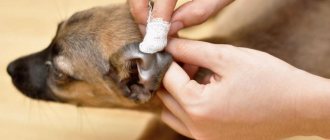Budgerigars require careful care from the owner. It consists not only in the availability of high-quality and nutritious food, but also in periodic trimming of the claws.
If the bird does not have the ability to sharpen its claws on its own, then they become too long. This brings significant inconvenience to the wavy, and long nails can cause a significant deterioration in health. Therefore, it is recommended to learn the basic rules of cutting and study in advance the question of how to trim the claws of a budgie.
The structure of the claws
The parrot's claw consists of 2 parts: the cornea and the pulp. The pulp is the soft inner part that contains blood vessels and nerve endings. The horny sheath is devoid of capillaries and nerves; it covers the soft part on top. It is the horny part that grows, and it should be cut off without damaging the soft tissue.
To determine the location of the cut, the claw is illuminated from the side with a flashlight. The pulp is located at the base, the blood capillaries reach approximately the middle of the claw, and at the end there is a dead horny part.
When claws grow excessively, the soft tissue area also increases, so when treating paws in advanced cases, you need to be especially careful. With regular trimming, the capillaries and pulp will gradually shrink, returning to normal.
Stress relief
Nail trimming is often a very stressful time for parrots. The bird may not only get scared, but also be offended by its owner. Therefore, you definitely need to prepare your bird’s favorite treat in advance. After pruning, the bird should be left alone for several days, no other procedures should be performed, and it should be protected from possible distress. Little birds (wavy birds, lovebirds) will definitely appreciate a gift in the form of a caged toy.
This is interesting: Pekingese behaves strangely after a haircut
Why do you need nail trimming?
In the wild, parrots wear down their claws naturally. In captivity, to avoid health problems for the bird, you need to trim your budgie's claws by hand. If this is not done, the following situations may arise:
- the parrot will experience discomfort when moving on flat surfaces due to improper loads on the paws;
- the parrot will not be able to sit correctly on the perch, due to which the paws will be deformed and diseases of the joints and bones will occur;
- a parrot can catch its overgrown claws on the bars of the cage, upholstered furniture, carpet, curtains or other fabric while walking around the apartment and injure its paw in attempts to free itself;
- when caring for feathers and trying to scratch itself, the parrot can injure itself;
- a long nail may break or split, causing bleeding and pain to the bird.
What are the consequences of growing claws on a parrot?
There is disagreement among parrot breeders about whether or not to trim your parrot's nails. The main argument of opponents of this procedure looks like this: in its natural habitat, no one runs after a bird with scissors.
Proponents of cutting nails of small breeds, including budgerigars, give several reasons why this is necessary:
- Overgrown nails prevent the bird from walking and sitting on the perch.
- If the bird wants to scratch itself, it will hurt itself with an overgrown claw.
- If a bird sits on a fleecy fabric - a blanket or carpet, during a sharp take-off it runs the risk of tearing out a claw caught in the pile, or even dislocating its paw. As a result of such an injury, the bird may become disabled or die.
- Large breeds of parrots can bite off the overgrown part of the nail themselves; budgerigars do not have this opportunity, since their beak is not of sufficient size.
Important! In the room where budgies are kept, it is not advisable to lay carpets or hang fleecy fabrics outside the cage, on which the bird can get caught and injure itself.
Trimming a pet's nails should be done safely for the bird, using special tools and antiseptics that are prepared in advance. The parrot's nails need to be cut as the keratinized tissue grows back.
Natural claw sharpening
Parrots use their claws to move across various surfaces and to capture and hold food. In nature, the paws of parrots are subject to constant stress: birds run on the ground and stones, climb trees, pick and hold seeds and fruits. Constant contact with hard, rough surfaces quickly wears down the claws.
In captivity, parrots lead a sedentary lifestyle. Their paws come into contact only with perches, metal and plastic inside the cage, smooth table surfaces and upholstered furniture when walking. Lack of contact with rough surfaces prevents the normal grinding of the growing stratum corneum. The situation is aggravated by the absence of ropes and ladders made of natural materials in the cage, as well as the presence of plastic or polished wooden perches of small diameter.
Is it possible to file down claws?
Trimming parrots' nails is not an easy task, especially if you have little experience in this matter. Many owners who have recently become owners of cute pet birds mistakenly believe that for the purposes of basic hygiene it is better to file the horny processes on the pets’ paws with manicure files rather than trim them. Any experienced parrot owner will confirm that this approach is extremely wrong, and a veterinarian or ornithologist will completely prohibit these rash actions.
Although filing can result in neater and less sharp claws compared to trimming them with nail scissors or tongs, this procedure is potentially dangerous for the bird and can cause negative consequences.
How to trim a budgie's claws
You can determine whether a parrot needs its claws trimmed when the bird is standing on a flat surface, such as a table. If your fingers fit snugly to the table, no trimming is required. If the ends of the fingers rise above the surface, it means that the claws have grown too much and should be shortened.
Necessary equipment
It is more convenient to carry out the procedure together with an assistant, when one person holds the parrot and the other trims the claws. But, if the bird is calm, you can cope alone. To trim a parrot's claws at home, you need to prepare the following items:
- nail clipper (it is sold in pet stores and can be of various designs - in the form of a guillotine, nippers or scissors) or nail scissors;
- antiseptic solution;
- towel or gloves;
- cotton wool;
- hemostatic agent (hydrogen peroxide or potassium permanganate solution).
Manipulations are performed in a well-lit place. If the owner is performing the procedure for the first time, you should take a flashlight to illuminate the parrot's claws and find out where the blood vessels end.
Nail trimming procedure
The nail clipper or scissors are treated with an antiseptic solution. Put on gloves or take a towel and fix the parrot in your hand so that the wings are pressed tightly to the body and the head is located between the thumb and forefinger. In this position the bird will not be able to resist. At the same time, you should not squeeze the pet too much so as not to harm it.
After fixation, one finger of the parrot is carefully released and the claw is examined in transmitted light to determine the location of the blood vessel. The regrown tip is cut 2 mm below the capillary at an angle of 45°. The cut is made in one movement, avoiding delamination or breaking of the claw. It should not be too sharp, but not too blunt, so that the bird can easily move along vertical surfaces and sit on perches even immediately after performing the procedure. In this way, the claws on all fingers are cut, making sure that while processing one finger, others do not get caught in the mechanism of the tool. After trimming the parrot's claws, the parrot is praised and given a treat. The nail clipper or scissors are again treated with an antiseptic and put away for storage.
In advanced cases, when the claws have not been trimmed for a very long time and they have grown a lot, after the first trimming they may still remain too long, but the blood vessels will be located close to the cut. In this case, you should not rush and cut the nails too short - this can damage the pulp. The parrot should be placed in a cage with a large amount of materials on which it can grind its claws naturally. Gradually the pulp will decrease in size. After some time, the bird is examined again and the excess horny part is cut off. The procedure is repeated several times until the pulp returns to normal size.
Possible problems
No matter how hard the owner tries to carefully trim the budgie's claws, the bird may jerk and the cut will be higher than the desired area. If the pulp was touched and blood began to flow, you should quickly moisten cotton wool in hydrogen peroxide or a solution of potassium permanganate and press it to the wound. After a few seconds the bleeding will stop.
On a note! You can also apply 1-2 crystals of potassium permanganate to the cut, but remember that in large quantities this substance causes chemical burns.
Many birds experience stress during nail trimming, especially if the procedure is being performed for the first time. After the manipulations are completed, the parrot may be scared for some time, refuse to communicate and come to the owner’s call. Such changes in behavior will be especially pronounced if the bird was hurt during shearing. In this case, you should leave your pet alone for a while. You can offer him his favorite food or a new toy. After some time, the parrot will begin to trust its owner again.
Video material
For an inexperienced owner, trimming a budgie's long nails can seem daunting. The correct order of the procedure and the subtleties of the manipulations are presented in the video.
What to do if a parrot is injured in the process and starts bleeding
Trimming a parrot's nails, especially if this is happening for the first time, is a significant stress for the pet. Therefore, he can react quite violently to this procedure, disturbing the owner.
If during this the parrot starts bleeding, then don’t worry too much. Most likely, this indicates that a blood vessel has been affected . In this case, the procedure must be stopped, the bleeding must be stopped, and then the wound must be treated with a disinfectant solution.
If the injury is minor, then it does not pose a danger to the health and life of the feathered pet.
If, while trimming the claws, the owner accidentally injures the bird, then, first of all, it is necessary to stop the bleeding. This can be done using a small piece of cotton wool soaked in hydrogen peroxide.
The use of potassium permanganate to stop bleeding and disinfection is undesirable, since its undissolved crystals can cause significant chemical burns in birds.
In addition, there is a special veterinary powder on sale that can stop severe bleeding in birds and other pets. In addition to its hemostatic properties, it is also an excellent means for wound disinfection.
After the bleeding has stopped, it is necessary to provide rest to the pet for a while, and postpone the trimming procedure until the wound has completely healed.
Prevention of nail growth
To cut your parrot's claws less often, you should take care to grind them down naturally. To do this, all plastic structures inside the cage are replaced with wooden ones. Instead of plastic perches, untreated branches of fruit trees with bark are placed. Their diameter should be such that the bird grasps 3/4 of them; for a budgerigar it is approximately 15 mm. Hemp ropes, ladders and toys made of wood and other natural materials are placed in the cage. You can set up a play area with small pebbles, dry cones and pieces of bark.
Sometimes excessive growth of claws is caused by poor health of the bird or an incorrectly selected diet. In such cases, after eliminating the cause, the excessive formation of horny substance stops.
Preparation for the procedure
Before trimming a parrot's claws, you need to calm it down and set it in a positive mood. It is best to carry out the procedure at a veterinary clinic, but it is possible to do it yourself. To do this you will need special animal clippers. You can buy them at a veterinary store.
If this is not possible, then use a regular manicure set. But be sure to treat it with antiseptics before and after the procedure. You will also need cotton wool or cotton pads, a towel or gloves, and a product that stops the bleeding. During preparation, it is very important to determine exactly where the cut needs to be made, because birds have capillaries in their claws that cannot be touched. In order to do this, you need to shine a flashlight on your paw, so all the vessels will become visible.
Preventive measures
Replace the plastic perch with a wooden one.
If the owner is primarily concerned with the peace of mind of the pet and in order not to expose it to a stressful environment, immediately after purchase, care should be taken to fill the cage with natural materials that will help grind down the claws naturally. After purchase, it is advisable to replace all plastic elements in the enclosure with wooden ones. Ladders and toys are selected from solid natural wood. It is advisable to place pebbles and tree bark of different textures inside the home .
If the pet is tame, then it is periodically released for a walk around the room, after closing the windows and doors and removing other pets.
An important component is the diameter and material of the perch on which the pet sits. The thickness of the perch should be at least 15 mm, so that the bird’s fingers wrap around three-quarters of it. If the fit is correct, the claws will wear out spontaneously. A plastic perch is considered unsuitable. A hard surface can injure the paws and the empty cavity harbors parasites that are life-threatening for the pet. The ideal perch is an established branch cut from a fruit tree.
Choosing food for parrots.
